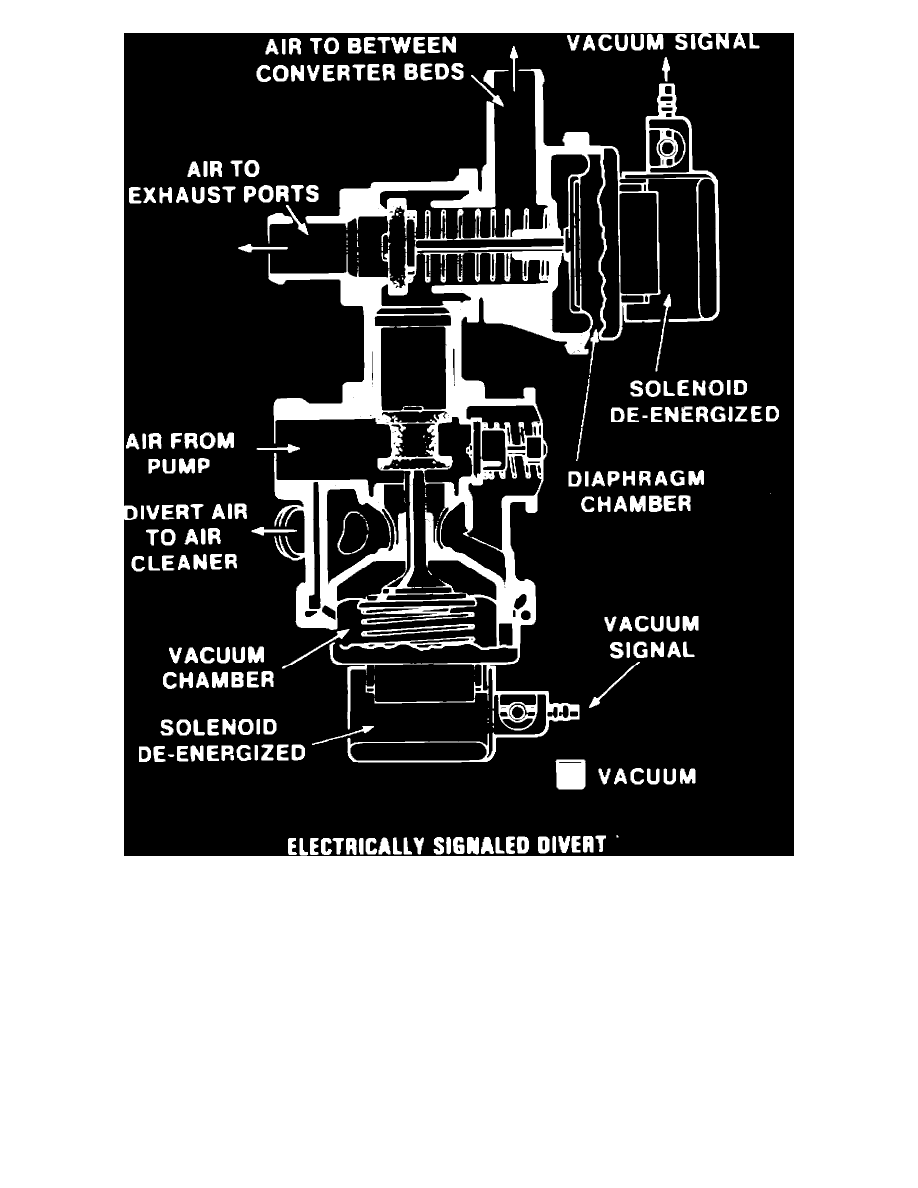Ninety-Eight FWD V6-181 3.0L (1985)

Fig. 15 ED/ES valve electric divert operation
Electric divert air control and electric air switching are combined into one valve assembly, which can be identified by the vacuum signal hose position,
Fig. 13. The valve is operated by vacuum signals which are solenoid-controlled through an Electronic Control Module (ECM).
During normal operation the ECM energizes the air control (lower) solenoid,
Fig. 14. Manifold vacuum holds the valve open and air is directed to the
air switching valve. If engine is operating in ``Open Loop'' mode, the ECM energizes the air switching (upper) solenoid,
Fig. 15, and manifold vacuum
opens the air passage to the exhaust ports. If engine is operating in ``Closed Loop'' mode, the air switching solenoid is de-energized, and spring tension
opens the air passage to the catalytic converter.
When the ECM determines that air should be diverted from the system, the solenoids are de-energized, spring tension closes the valves, and air pump
output is diverted to the air cleaner,
Fig. 15. Under low manifold vacuum conditions, as in wide open throttle operation, vacuum in the air control
chamber drops, spring tension closes the air control valve, and air is diverted to the air cleaner,
Fig. 16. Excess air pump output is also exhausted through
a pressure relief valve.
On some L-4 and V6 engines a deceleration valve is used with this system. This valve eliminates the need for deceleration divert by providing
additional air to the intake manifold, leaning the normally rich mixtures created by high vacuum operation.
